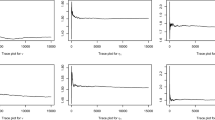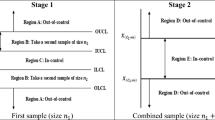Abstract
This paper aims to describe an alternative fire growth model that allows prediction of fire development, including time to flashover. The unpredictable nature of real fire development is incorporated into the model through use of probability distributions which can be defined using appropriate fire test data, when available. By assuming that the fire goes through five different stages starting from ignition and progressing to flashover, the total time to flashover may also be estimated. The model considers potential variability in the times at which the fire will undergo transitions between the various stages of development, using a state transition method called the semi-Markov process model. Different fire data may be incorporated into the model by defining appropriate statistical distributions for the transition descriptors, making the model flexible enough for use in a variety of applications important to both product design engineers and fire safety regulators.







Similar content being viewed by others
References
Joglar F, Mowrer F, Modarres M (2005) A probabilistic model for fire detection with applications. Fire Technol 41:151–172
Kui Au S, Wang Z-H, Lo S-M (2007) Compartment fire risk analysis by advanced monte carlo simulation. Eng Struct 29(9):2381–2390
Hasofer AM, Beck VR (1997) A stochastic model for compartment fires. Fire Saf J 28(3):207–225
Williamson RB (1981) Coupling deterministic and stochastic modeling to unwanted fire. Fire Saf J 3(4):243–259
Rasbash D, Ramachandran G, Kandola B, Watts J, Law M (2004) Stochastic fire risk modeling. In: Evaluation of fire safety. Wiley, Chichester, pp. 399–420
Colbourn CJ, Nel LD, Boffey TB, Yates DF (1994) Network reliability and the probabilistic estimation of damage from fire spread. Ann Oper Res 50:173–185
Platt DG, Elms DG, Buchanan AH (1994) A probabilistic model of fire spread with time effects. Fire Saf J 22(4):367–398
Ramachandran G (1991) Non-deterministic modelling of fire spread. J Fire Prot Eng 3:37–48
Morishita Y (1985) A stochastic model of fire spread. Fire Sci Technol 5(1):1–10
Hadjisophocleous GV (1992) A model for calculating the probabilities of smoke hazard from fires in multi-storey buildings. J Fire Prot Eng 4(2):67–69
Watts JM (1986) Dealing with uncertainty: Some applications in fire protection engineering. Fire Saf J 11(1-2):127–134
Hasofer AM, Odigie DO (2001) Stochastic modelling for occupant safety in a building fire. Fire Saf J 36(3):269–289
Cheng H, Hadjisophocleous GV (2009) The modeling of fire spread in buildings by bayesian network. Fire Saf J 44(6):901–908
Berlin GN (1985) Managing the variability of fire behavior. Fire Technol 16(4):287–302
Vinod G, Saraf RK, Ghosh AK, Kushwaha HS, Sharma PK (2008) Insights from fire psa for enhancing npp safety. Nucl Eng Des 238(9):2359–2368
Peacock RD, Forney GP, Reneke P, Portier R, Jones WW (1986) CFAST, the consolidated model of fire growth and smoke transport. National Institute of Standards and Technology, Gaithersburg, MD, US
McGrattan K (2004) Fire dynamics simulator (FDS). National Institute of Standards and Technology, Gaithersburg, MD, USA
Siu NO (1982) Physical models for compartment fires. Reliab Eng 3(3):77–100
Systems Analysis Programs for Hands-on Integrated Reliability Evaluations (SAPHIRE). Idaho National Engineering Laboratory, Lockheed Martin Idaho Technologies Company, USA
Valbuena G, Modarres M (2009) Development of probabilistic models to estimate fire-induced cable damage at nuclear power plants. Nucl Eng Des 239(6):1113–1127
Siu NO, Apostolakis GE (1982) Probabilistic models for cable tray fires. Reliab Eng 3(3):213–227
Lee Y-H, Kim J-H, Yang J-E (2010) Application of the cfast zone model to the fire psa. Nuclear Engineering and Design 240(10): 3571–3576. In: 4th International Topical Meeting on High Temperature Reactor Technology (HTR 2008), Washington, with Regular Papers
Safaei Arshi S, Nematollahi M, Sepanloo K (2010) Coupling cfast fire modeling and saphire probabilistic assessment software for internal fire safety evaluation of a typical triga research reactor. Reliab Eng Syst Saf 95(3):166–172
Hostikka S, Keski-Rahkonen O (2003) Probabilistic simulation of fire scenarios. Nucl Eng Des 224(3):301–311
Frank Michael V, Moieni P (1986) A probabilistic model for flammable pool fire damage in nuclear power plants. Reliab Eng 16(2):129–152
Veeramany A, Pandey Mahesh D (2011) Reliability analysis of nuclear piping system using semi-markov process model. Ann Nucl Energy 38(5):1133–1139
Veeramany A, Pandey Mahesh D (2011) Reliability analysis of nuclear component cooling water system using semi-markov process model. Nucl Eng Des 241(5):1799–1806
Veeramany A, Pandey Mahesh D (2011) Reliability analysis of digital feedwater regulating valve controller system using a semi-markov process model. Int J Nucl Energy Sci Technol 6(4):298–309
Howard RA (1964) System analysis of semi-markov processes(systems analysis of semimarkov processes, expressing results in form of matrix flow graph). IEEE Trans Mil Electron 8:114
Howard RA (1971) Dynamic probabilistic systems, vol 1: Markov Models. Wiley, New York
Vodvarka FJ, Waterman TE (1975) Fire behavior, ignition to flashover. Technical report, IIT Research Institute, Chicago, IL
Barnett CR (2002) Bfd curve: a new empirical model for fire compartment temperatures. Fire Saf J 37(5):437–463
Barnett CR (2007) Replacing international temperature–time curves with bfd curve. Fire Saf J 42(4):321–327
Author information
Authors and Affiliations
Corresponding author
Rights and permissions
About this article
Cite this article
Veeramany, A., Weckman, E.J. & Pandey, M.D. A Semi-Markov Fire Growth Model. Fire Technol 50, 437–454 (2014). https://doi.org/10.1007/s10694-012-0304-7
Received:
Accepted:
Published:
Issue Date:
DOI: https://doi.org/10.1007/s10694-012-0304-7




